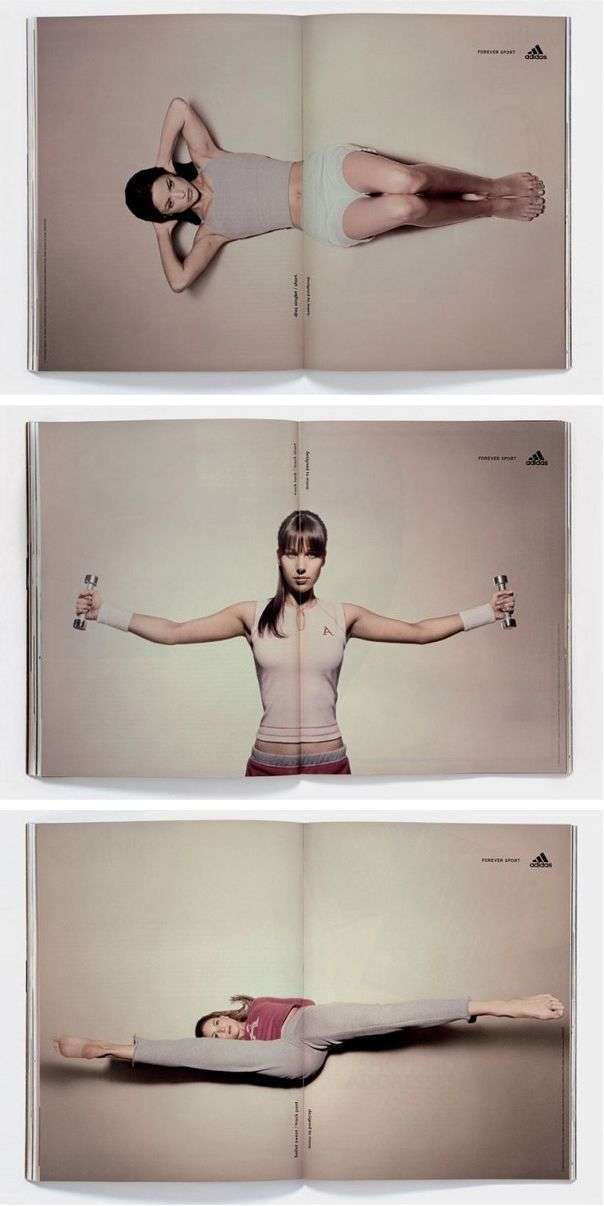
You have many options when creating an ad campaign, but there are several key things to consider. First, set your branding goals. What are you looking to accomplish in the long-term and short-term? Active and passive signals are available to help you target the right audience. You can also use lookalike audiences to further tailor your message. Next, you can create your ad using these objectives. After all, if you do not know your audience, how will you know who to target?
Designing your ad around your target audience
You can create more effective ads if you know your target audience. You will have a greater chance of connecting with your ideal customer and earning their business. It's also possible to better communicate with them, as the interests and preferences of your target audience will coincide with your brand. Research has shown that 80 per cent of consumers would rather engage with brands who understand their interests.

Using active and passive signals
When creating an ad, it's important to remember that you are leveraging signals to increase your chances of being seen. Signals are an important part of Facebook's algorithm. You can divide them into two main categories, active and passive. Passive signals are ones that are only measured. Active signals promote engagement. If you're creating an ad for a mobile phone app, for example, you need to consider the difference between active and passive signals.
You can target your ads based on where you live
One of the most effective ways to target your ads is to segment them by geography. Facebook allows you to target people within a certain radius around your target area, which is ideal if you want to reach travelers and those who are constantly on the go. Fortunately, Facebook also allows you to target people within a 10 or 20-mile radius around your target area. Your return on advertising investment can be maximized by targeting geographic areas. This will allow you to attract more repeat clients and increase your profits.
Using lookalike audiences
Facebook allows you to create Lookalike Audiences, based upon your page's traffic. This list can be used for creating targeted ads for customers and potential customers. Facebook matches your data to other users in its database. With other targeting parameters such gender, age and interests, lookalike users can be combined. By combining Pixel data, customer info, and the fan list, you can create lookalike audience.

Getting more leads from your ad
Your Facebook ad must include a call of action. This is key to generating more leads. When people see your ad, they are already curious about your problem and want to know more about your solution. This is a great way for you to increase sales and reach peak interest if you use automatic placement. Make sure that your call-to-action is appropriate for the type of lead you want to create.
FAQ
How much does advertising on social media cost?
You should be aware that social media advertising costs money. You will be charged monthly depending on your time on each platform.
Facebook - $0.10 per 1,000 impressions
Twitter - $0.20 for 1,000 impressions (if tweeting)
If you send out invitations to Linkedin, $0.30 per 1,000 impressions
Instagram - $0.50/1000 impressions
Snapchat – $0.60 per 1,000 impressions ($0.40 for each user)
YouTube - $0.25 per 1,000 views
Tumblr - $0.15 per 1,000 impressions for text posts.
Pinterest - $0.05 per 1,000 impressions per month
Google + $0.15-$0.20 Per 1 Million Impressions
Tumblr: $0.15-$.20 per 100,000 impressions
Vimeo - $0.20 to $0.25 per 10,000 impressions
Soundcloud: $0.20-$0.25 Per 1 Million Plays
StumbleUpon - $0.20 -$0.25 per 1 billion pageviews
Digg – $0.20 - 0.25 per 1000 diggs
Reddit $0.20-$0.25/1000 comments
Wordpress – $0.20--$0.25 Per 500 Comments
Flickr - $0.20 -- $0.25 per 5,000 photo uploads
What is the best way to advertise in print?
Print advertising is a good medium to communicate effectively with consumers. Print advertising is used extensively by companies to promote their products or services. The main goal is to catch the attention and buy from the consumer.
Print ads are usually short (one page) and contain text, pictures, logos, and other graphics. They can also include sound and animation as well video and hyperlinks.
The following are the main types print advertisements:
1. Brochures are large-format printed materials that are designed to draw people into shops. They are often filled with colorful images and catchy designs.
2. Catalogues – These are smaller versions to brochures. These are usually sent to customers who request information about specific items.
3. Flyers – These are small pieces made of paper that are distributed at events, such as fairs or concerts. Flyers can be handed out at retail outlets for a small fee, but are generally free.
4. Flyers are also available in posters. They are displayed on walls, fences, and buildings. They are typically created using computer software programs that aim to attract the attention of passersby.
5. Direct mail – This is a direct mailing of letters or postcards directly to customers. Companies send these out periodically to remind existing customers about their business.
6. Newspaper Ads are placed in newspapers and magazines. They are usually quite long and contain both text and images.
What is radio advertising?
Understanding how different media interact with each other is crucial. Remember that media can complement each other and are not necessarily competitive.
Radio advertising can be extended to television. Radio can complement TV advertising by reinforcing key messages, and providing additional information.
Radio listeners often find TV commercials too lengthy. Radio ads are typically shorter and less costly.
What is affiliate marketing?
Affiliate marketing is an internet business model in which you refer customers to other products and services. When someone purchases from you, the product owner will pay you.
Affiliate marketing is based on referrals. To get people to buy from your affiliate marketing, you don't have any special requirements. All they have to do is to refer them the website.
Making money doesn't require any hard selling. It's easy to sell just as much as it is to purchase.
In minutes, you can also set up an affiliate account.
Referring more people will result in more commission.
There are two types affiliates.
-
Affiliates who have their website owned by them
-
Affiliates who work with companies that provide products and/or services.
What is an advertisement campaign?
Advertising campaign refers to a series of advertisements intended to promote a product. It could also refer the entire production of such advertisements.
The term "ad" comes from the Latin word for "to sell." Marcus Terentius Varro (116–27 BC) was the first person to use it. It meant "to sell".
Advertising campaigns are often carried out by large agencies or companies. These campaigns may include many media types such as print, television, radio and the internet.
Advertising campaigns are typically long-lasting and have clear goals. Advertising campaigns can have different goals. Some are focused on increasing sales while others generate awareness.
Social media is a great way to advertise your business.
Social Media Marketing, or SMM, allows you access customers directly on social networks, such as Facebook, Twitter LinkedIn YouTube YouTube Google+. You can also target specific audiences within these networks by using keywords.
This advertising strategy is cost-effective as it costs less than traditional methods to market online. You can also build strong relationships and trust with your clients, both current and prospective.
It's easy to start using social media to promote your business. You only need a smartphone or computer and internet access.
Is it possible for traffic to be free?
Refers to traffic that is free from search engine results. This type of traffic is called natural or organic traffic. You can get traffic free of charge by using article marketing, social media marketing and blogging.
Article marketing is one of the most effective ways to get free traffic. This is because it has a very low cost per click (CPC). Paid ads are more expensive than the CPC. Content marketing is also known by the term article marketing.
Social Media Marketing - Social media sites like Facebook, Twitter, and LinkedIn allow you to promote your business through advertising. These platforms allow you to share updates, photos, and establish relationships with potential customers. Many businesses choose to buy ad space in social media because they want a wider reach at a reduced price.
Blogging – Blogging is another way to get free traffic. High quality content will draw people to your blog. You can start to monetize your blog with the sale of products or services after you have attracted readers.
Email Marketing – Although email marketing was around long before the internet, it's still one of most effective ways to drive website traffic. Email marketing is an effective strategy to grow your subscribers and eventually sell things.
Statistics
- It collects money from the advertisers, keeps 32% for its role in facilitating the process, and the remaining 68% goes to the publisher (you). (quicksprout.com)
- In 1919 it was 2.5 percent of gross domestic product (GDP) in the US, and it averaged 2.2 percent of GDP between then and at least 2007, though it may have declined dramatically since the Great Recession. (en.wikipedia.org)
- Advertising's projected distribution for 2017 was 40.4% on TV, 33.3% on digital, 9% on newspapers, 6.9% on magazines, 5.8% outdoor, and 4.3% on radio. (en.wikipedia.org)
- This means that at least 50% of an ad needs to be shown on the screen for at least one second. (quicksprout.com)
External Links
How To
How can I advertise through Google?
AdWords, Google's advertising platform, allows businesses to buy ads based upon keywords they wish to target. First, you need to set up an account. Set the budget, select the campaign name, and then add keywords. Then, you place a bid on the keywords. Clicking on an ad will pay you only if it is clicked by someone who searched using one of your targeted keywords. This allows you to get paid even if people don’t buy anything.
Google offers many tools that will help you make your ads more effective. These tools include Ads Preferences Manager Manager, Keyword Planner and Analytics. These enable you to determine what is most effective for your business.
A keyword planner can help you identify the right keywords for your campaigns. You can also see how competitive certain keywords are, which will help you decide whether to spend money bidding for them.
Ads Preferences Manager allows you to modify settings like the maximum number impressions per day, and the minimum cost of each click.
Analytics lets you track the performance of your ads and compare them to competitors. Reports can be viewed that compare your ads to others.